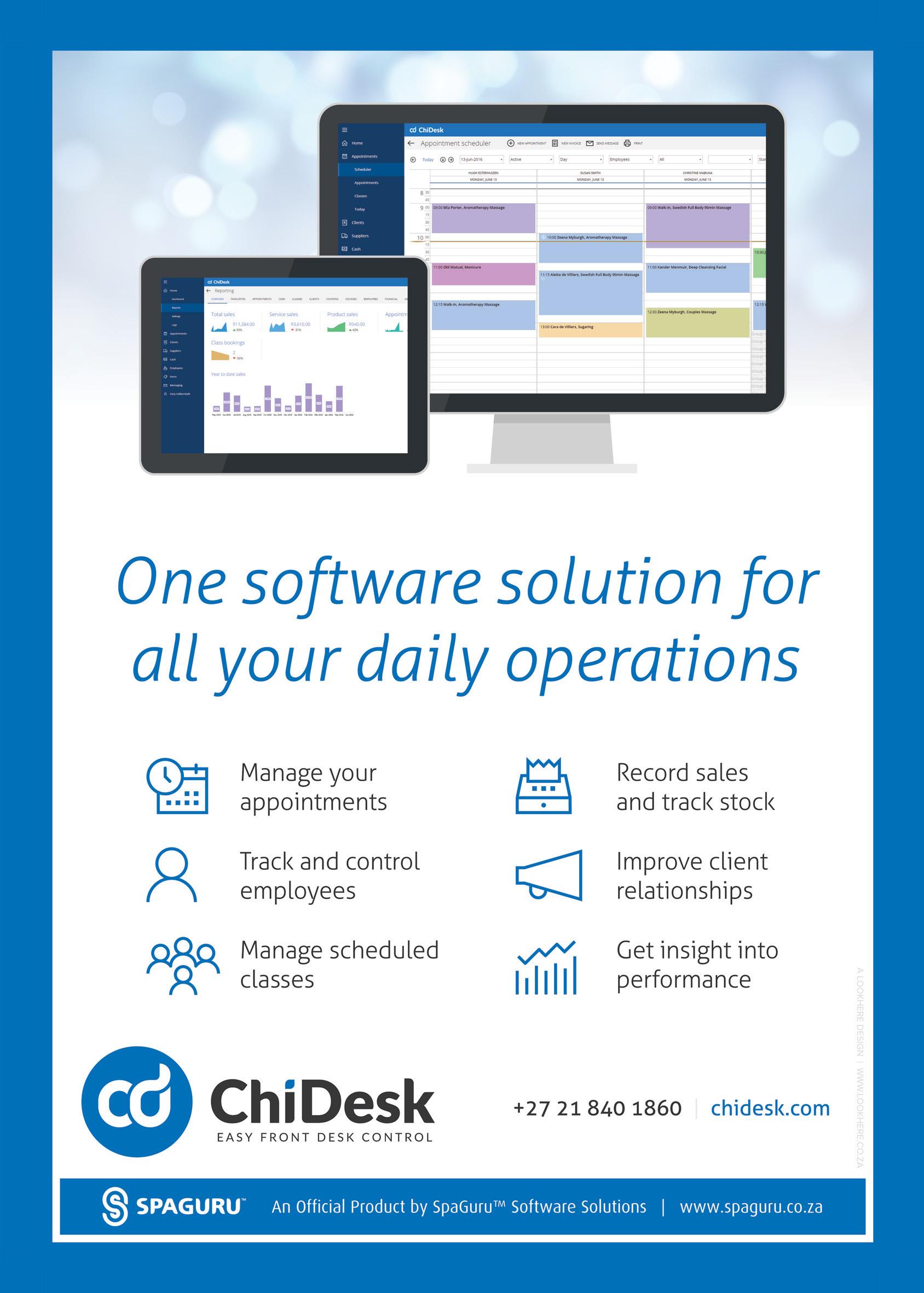
6 minute read
The Benefits of Having Your Own Niche
7 Strategies to Diversify Revenue Streams in your Spa By Spa Executive

Advertisement
Safeguard your business by creating more than one income channel. Here are seven strategies to diversify revenue streams in your spa.
One of the most effective business strategies is diversifying revenue streams. Having only one or two revenue streams puts your business in a precarious situation, because if you lose one or both of them, you lose everything, as many spas discovered during the COVID-19 shutdowns. Suddenly people couldn’t, or wouldn’t, travel, go to spas, or be touched by and breathe the same air as other humans; and so there was no revenue. The scene was frightening.
This doesn’t only apply to spas, wellness, and hospitality. Any business in any industry that relies too heavily on one product, service, or big client, can fall into this trap. And a pandemic is not the only threat. We have no idea what the next disrupter might be. It could be automation, natural disaster, an alien invasion, or something else.
What we can do – and what many spas started doing during the 2020 pandemic year – is create diverse revenue streams through creativity and innovation, meaning businesses may be better armed to weather another storm. Diverse revenue streams also bring in more revenue in good times.
Here are a few examples of ways to diversify revenue streams that can help you thrive in good times and bad.
Memberships
With memberships, customers pay a monthly fee for a set number of treatments or services and/or regular use of amenities. In some ways, this may be more of a European approach. In an interview with Spa Executive magazine, Benjamin Donat, Spa Director at the St Regis Deer Valley’s Remede Spa, who grew up in Germany, noted that European spas tend towards focusing on amenities before treatments. He said, “In Europe, there is more of a focus on the amenities, rather than the treatment, to give the guests reasons to stay all day or just come for a spa day without even booking a treatment. In America the treatment is the focus, and the locker room can sometimes be an afterthought or regarded as not as important. Though I do see a bit of a shift here towards the European way lately.”
A membership program may also include member discounts, exclusive services, or monthly credits that can be redeemed at your facility
Subscription Services
Subscription services, meanwhile, can be a fun way to stay connected with your guests and add a new revenue stream. Guests can sign up for a subscription and get products and packages delivered to them on a regular basis. These packages can be personalized and can ensure your customers never run out of their favourite products. You can get creative with little additions, gifts, and messages.
Both memberships and subscription services are ways to diversify and to create a steady revenue stream that continues even during slower months, like the post-holiday period.
Leverage Retail
In an interview with Spa Executive, Gordon Tareta, currently the Area Spa Director at Marcus Hotels & Resorts, noted that the average spa revenue is about $1.5 million USD per location and just 5% to 6% of that revenue comes from retail sales. There is a lot of room for improvement there.
There are many ways to leverage retail beyond in-store shopping, like getting creative with packages and promotions. Offering customers the chance to build their own gift box either in store or online is a good example of smart retail from Gadabout SalonSpas.
Gadabout’s Gadabox allows customers to build a gift box with their choice of products, which are packaged along with samples and a handwritten note in a box tied with a bow, then delivered to the recipient. The box can be built online or in one of Gadabout’s locations. Gadabout’s Megan Jasper said in an ISPA webinar on diversifying revenue streams during ISPA’s 2021 Stronger Together Summit that Gadabout’s online revenue tripled in the last year and that 15% to 20% of that online revenue was from the Gadaboxes.
Focus also on personalizing your retail marketing, which is easily done by analyzing data on both individual customers as well as customer segments which can be collected with your spa software system. Partner with Experts
Find people to work with to offer adjunct services and experiences at your spa. For example, the recently renovated Fairmont Century Plaza partnered with nutrition and anti-aging expert Dr. Oz Garcia to offer remote nutrition, wellness, and biohacking services.
Spa Director, Magdaleen- Nikolov said in the same ISPA webinar: “We’ve put together some really great biohacking treatments and branched out to different partners that Oz Garcia works with already to create these treatments.” She explained that Garcia would be booking online consultation programs and that Fairmont would also have him come out to the hotel for events and in-person bookings.
The hotel also partnered with antiaging and wellness expert Dr. Rita Rakus to open a clinic onsite. Nikolov said these partnerships can help alleviate the workload for her team. For example: “I don’t have to staff those days or while she’s here. I’m creating buzz, but it’s not my team that has to take on the heavy lifting.”
Think Outside the Spa
Consider taking your services into your customers’ homes or to events at other venues. Create specific packages and customizable options, combining retail and services to provide something exquisite, luxurious, and unique. Or take your consultation services into the virtual world. Combine partnering with experts with this idea.
Another example from Accor is designing touring experiences across locations. Emlyn Brown, Vice President, Wellbeing for Accor Luxury & Premium Brands, recently told Spa Executive, “I like the idea of traveling retreat progr-ms and pop-up destination spas and wellbeing in many of our properties around the world. If you bring the right experts to a property for a fixed period of time, like two or three weeks, then you pick it up and bring it somewhere else, you can create destination wellbeing retreats at various locations around the world. That’s an exciting opportunity.”
Partner with Other Businesses
Find other businesses to promote each other’s services. Gadabout has also partnered with a local car dealership. Megan Jasper explained in the ISPA webinar that, when a customer purchases a luxury car from that dealer, they receive a Gadabout gift card in the mail a few days later. The dealership buys the card at a discounted rate. Jasper said, “We see probably 500 to a thousand new guests because of that annually.” Think about partnering with realtors, restaurants, retailers, or whoever is out there that works well for your brand.
Leverage Technology
Technology can be employed on almost every level to increase revenue and add revenue streams, and technology makes most of the above-mentioned strategies possible.
Including low-touch or touchless therapies in your treatment options can free up therapist time and create experiences for guests who might be less interested in human contact. These might include guided meditation, VR, cryotherapy, floatation, contactless massages, IV and LED therapies, and more.
Some of these are bigger investments than others. So, rather than jumping into anything, do your research on what will appeal to your specific customer base and bring a solid return.
Technology can be used to leverage retail and gift card sales, to personalize offerings and to create content and virtual experiences, like online workshops and consultations.
A spa does not have to be only traditional services and in-store retail. Everyone can get creative with potential revenue streams and a lot of that is made possible by technology.
You’re limited only by your imagination.











